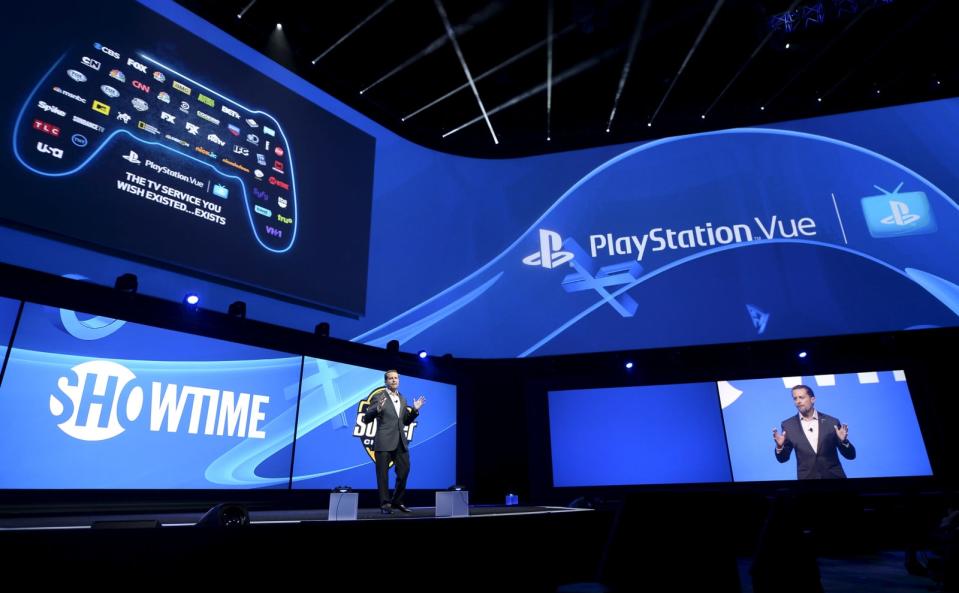PlayStation Vue is the canary in the cord-cutting coal mine
Streaming services have reached critical mass.
We knew this day would come. Sony will officially shut down PlayStation Vue on January 30th, 2020, following days of rumors and years of whispers about the longevity of the on-demand, OTT television service. PlayStation Vue offers a mix of live and streaming video starting at $50 a month, and it's currently used in 500,000 households in the United States, according to The Information. By comparison, Netflix has more than 158 million subscribers.
Half a million viewers is not enough to make Vue worthwhile for Sony's bottom line. Vue occupies a murky space in the streaming-TV industry, offering channel packages like a traditional cable company, but supplemented with streaming and DVR options. Sony rolled out Vue across the US in 2016, promising a streaming solution that would feel familiar to folks with cable packages, including the exorbitant price.
Nowadays, consumers know what streaming TV is. Packages don't need to mirror classic cable offerings -- in fact, it's better that they don't. Cable companies are notorious for splintering their channels into bundles, charging more for more popular stations, and jamming those tiers with programs that many folks don't want and won't watch. It's a confusing solution from a bygone era, and it doesn't make much sense in an entertainment landscape dominated by YouTube, Twitch and Netflix.

In the current streaming climate, viewers create their own bundles. It's still fragmented, and customers have to stay on top of which services they have, what they offer and how much they cost, but this system offers more freedom and cost-saving options than bulk-channel bundles. If you like watching Atlanta and also live Major League Soccer games, get Hulu and ESPN+ for just $11 a month, combined. Or $17, if you want to watch Hulu without ads. If you like Schitt's Creek and Fleabag, get Netflix (in 4K) and Amazon Prime Video (included with Amazon Prime memberships) for $29 per month, combined.
Live TV isn't as important as it used to be. Major political and news-making events are generally streamed live on YouTube, while live sports are accessible through specific sites and apps. Recurring shows often land on streaming services the day after, or even the same day, they air on traditional television. Exclusive and in-house content controls the streaming space, driving viewers to specific services in droves.
According to Nielsen, 16 million homes in the US don't have a cable subscription. That's just 14 percent of the overall market, but the figure is growing, and Sony's decision to drop Vue is likely a response to this clear trend. The number of cord cutters has grown by 48 percent over the past eight years, and more than half of these folks are from a younger generation, with a median age of 36. The future, it seems, is streaming.
Live TV isn't dead.
However, live TV isn't dead. There's Hulu+ Live TV, AT&T's DirecTV Now, and YouTube recently launched its own cable-like bundle with YouTube TV, which offers streaming video, DVR and access to live television for $50 a month. Yep, that's what Sony charges for the "Core" tier of PlayStation Vue. YouTube TV offers more channels than Vue and it has unlimited cloud storage, compared with Vue's limit of 500 programs, saved for 28 days. At last count, YouTube TV had more than 1 million subscribers.
YouTube TV is proof there's still a market for live TV bundles, especially if they include sports and original programming, but PlayStation Vue's demise signals that this industry is shrinking. There are other competitors, including Sling and Philo, and they'll probably drop prices in the coming months in a bid to pick up Vue's leftovers. YouTube might temporarily lower the price of TV, too, which would be bad news for Sling and friends. YouTube TV's strength lies in its position as an online, streaming service first, and a live-channel provider second. The incoming generation is more comfortable with streaming and more likely to trust a company that isn't trapped in a past stacked with set-top boxes and full DVR queues.
We've hit critical mass for streaming apps. With dozens of options and explosive newcomers like Disney+ on the horizon, consumers right now are taking stock of the services they actually use, and deciding how much they're actually worth each month. PlayStation Vue isn't the first live-TV option to kick the bucket, and it certainly won't be the last.



